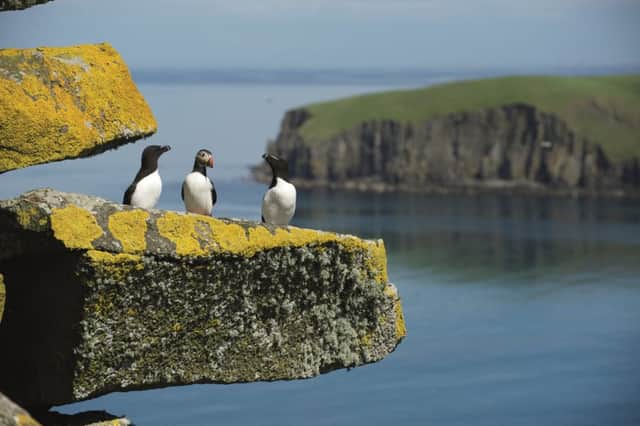Rats exterminated on Scottish isles to protect birds


Now the Shiant Isles has finally been declared rat-free after a major extermination operation to eradicate the invasive rodents.
The cluster of remote islands in the Outer Hebrides host around 100,000 pairs of nesting seabirds each year, including puffins, guillemots and razorbills.
Advertisement
Hide AdAdvertisement
Hide AdBut the islands, which lie five miles off Lewis and Harris, had become over-run with non-native black rats,thought to have set up home there after a shipwreck almost 200 years ago.
The most recent estimates suggested the population had exploded to around 3,600 rats, and evidence showed they were feeding on seabird eggs and chicks. Conservationists feared the vermin could decimate seabird breeding colonies in Shiant, some of the most important in Europe.
Now, after a successful four-year eradication project, they believe a range of seabirds species, many of which are suffering major declines, will have a much greater chance of survival.
It is also hoped that manx shearwaters and storm petrels may begin to nest on the islands now that the predators have been wiped out. Dr Charlie Main, senior project manager for the Shiant Isles Recovery Project, said: “This is an absolutely fantastic moment for the Shiant Isles, and everyone involved in the project is delighted that they are now officially rat-free.
“With so many of Scotland’s seabird populations in decline it’s vital that we do all we can to help them. Making these islands a secure place for them to breed is really important.
“Over the next few years we’re really looking forward to seeing the full impact of the islands’ restoration flourish, with the seabirds enjoying improved breeding successes and other species beginning to breed there as well.
“We’ll also continue to work with the local community to ensure this special place remains free of rats.”
Tom Nicolson, whose family owns the islands, said: “This is a tremendous story of success on so many levels. When the idea was presented to us six years ago, the pure logistics of the project seemed hugely ambitious. Now, knowing that new species are beginning to thrive on the islands so soon after the project has finished, there are no limits to what the Shiants could become over the next five, ten, 20 years.”
Advertisement
Hide AdAdvertisement
Hide AdWork to eradicate the rats, which involved setting poisoned bait was carried out over the winter of 2015-16 by a specialist team from New Zealand-based company Wildlife Management International Limited and 15 volunteers.
The works was made extra challenging due to the rugged terrain and steep cliffs on the islands, and hampered by severe Hebridean weather conditions including storms.
Since then, regular monitoring for signs of rats has been carried out – with none recorded. In order to ensure that the islands remain free of rats and other mammalian predators, visitors are being asked to follow simple biosecurity measures to help keep the islands safe for birds.
This includes checking boats and all kit for signs of rats prior to departing for the Shiants, and looking out for signs of the animals when ashore. Local boat operators along with SNH and RSPB Scotland staff have been trained in biosecurity measures by the project.